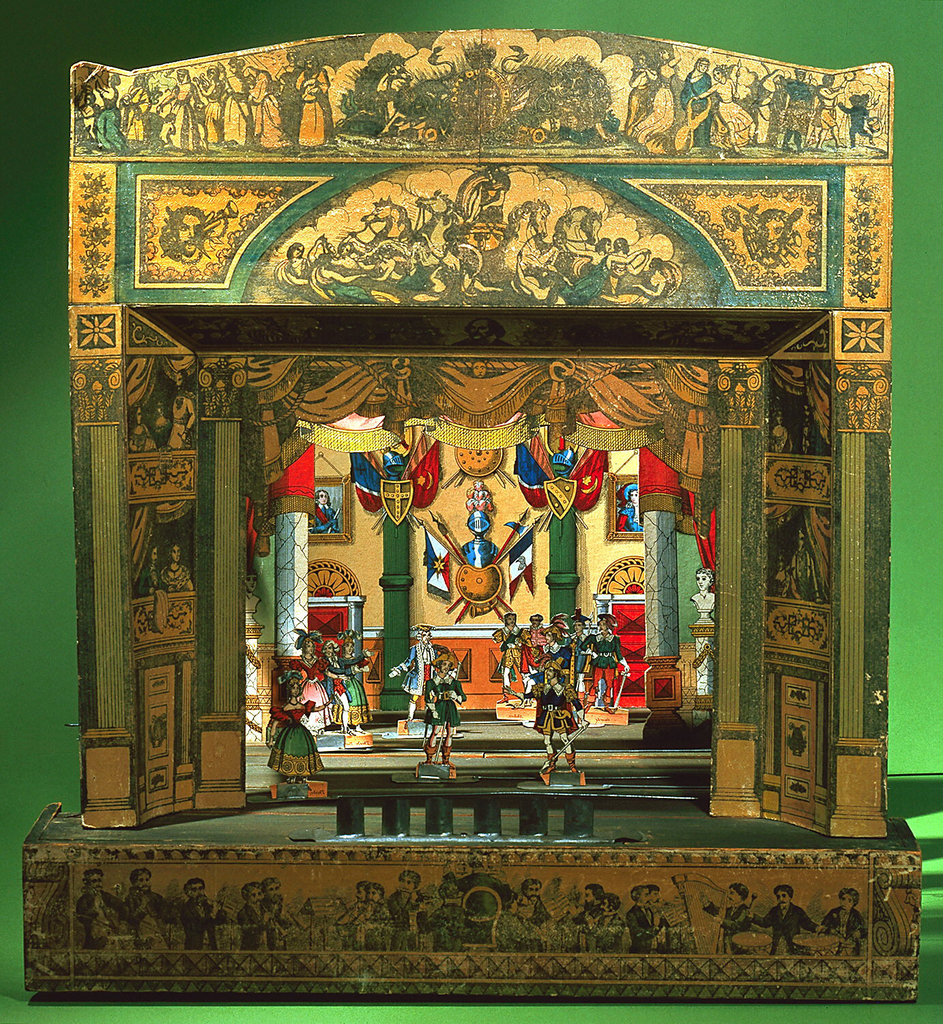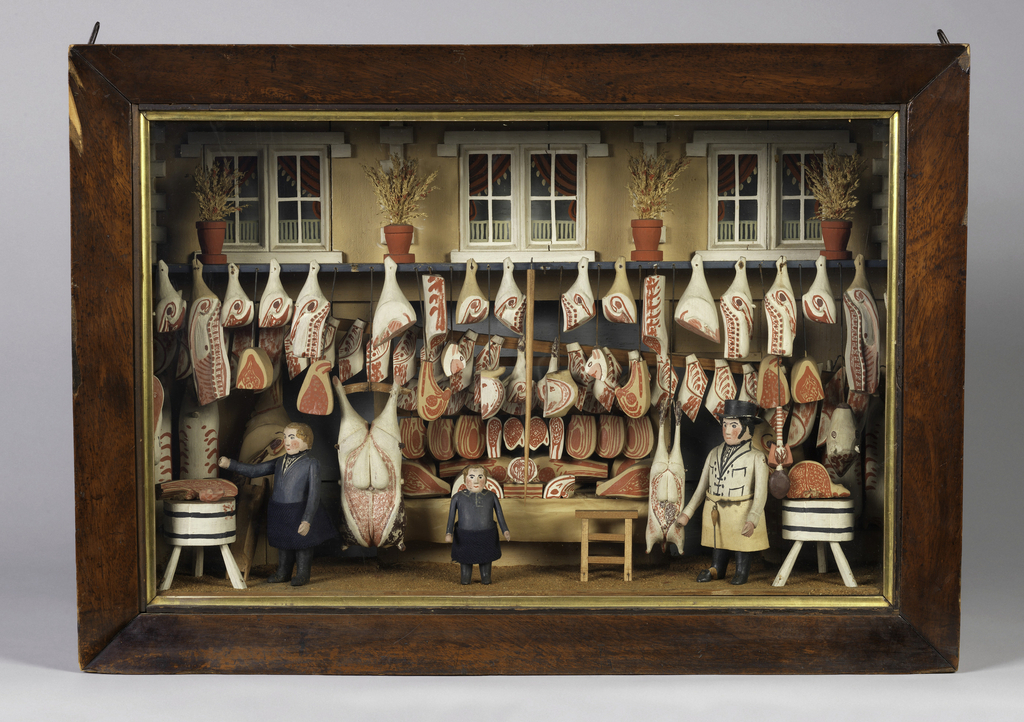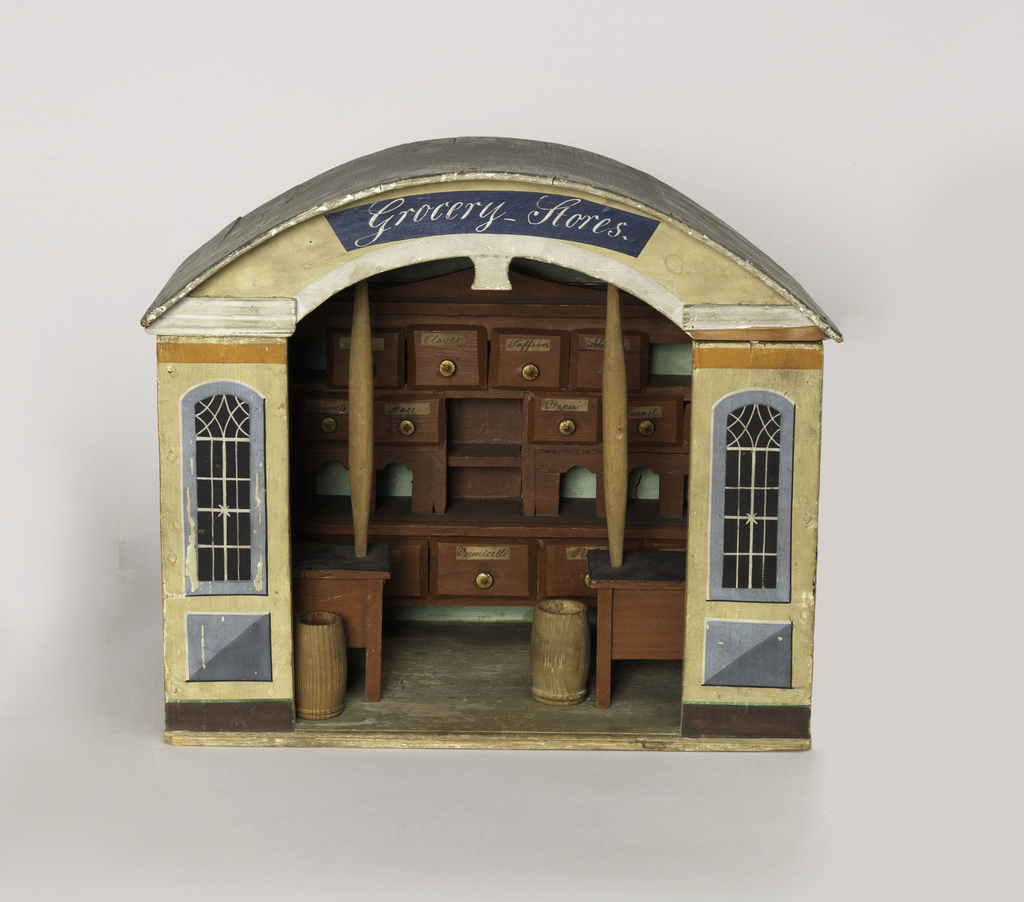Imaginative author Robert Louis Stevenson wrote in his 1884 essay, A Penny Plain and Twopence Coloured, “If you love art, folly, or the bright eyes of children, speed to Pollock’s…”[1] The toy theatre was a beloved pastime in 19th-century England that appealed to the creativity and craftsmanship of children and adults. Benjamin Pollock inherited his...
How can you draw customers inside your shop, when exposing wares in a window is not an option? This framed wooden butcher’s shop might be an answer. Although it is unclear to what uses this framed life-like model of a butcher’s shop might have been put, the fact that it is framed and behind glass,...
Seventeenth-century Dutch socialites Petronella de la Court and Petronella Oortman, the dauphin of France, Queen Victoria, and Queen Mary had them: dollhouses and miniature replicas of masterworks of furniture and decorative arts, through which they could recreate their larger-than-life existence. The popularity of these Lilliputian marvels extended well into the twentieth century, when doll-sized houses,...
A conversation with internationally acclaimed artist Shahzia Sikander and art historian and MoMA Director, Glenn Lowry. Shahzia Sikanders work takes apart the conventional methods of addressing traditional miniature paintings and reassembles them to expand their associations, inserting new dialogues often subversive in nature. Using wit, irony and paradox, Sikanders inventiveness draws upon literary, pop, media...



